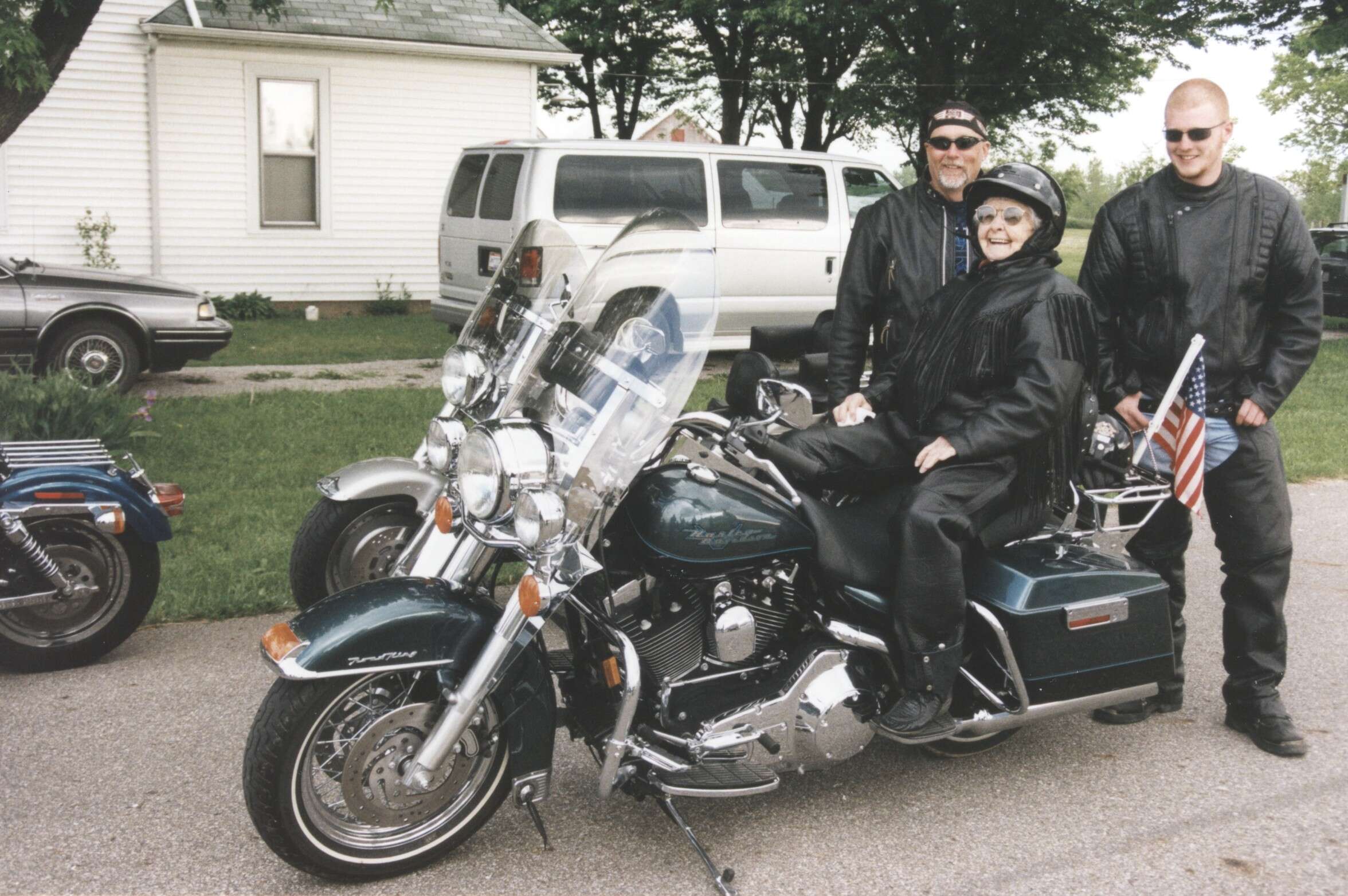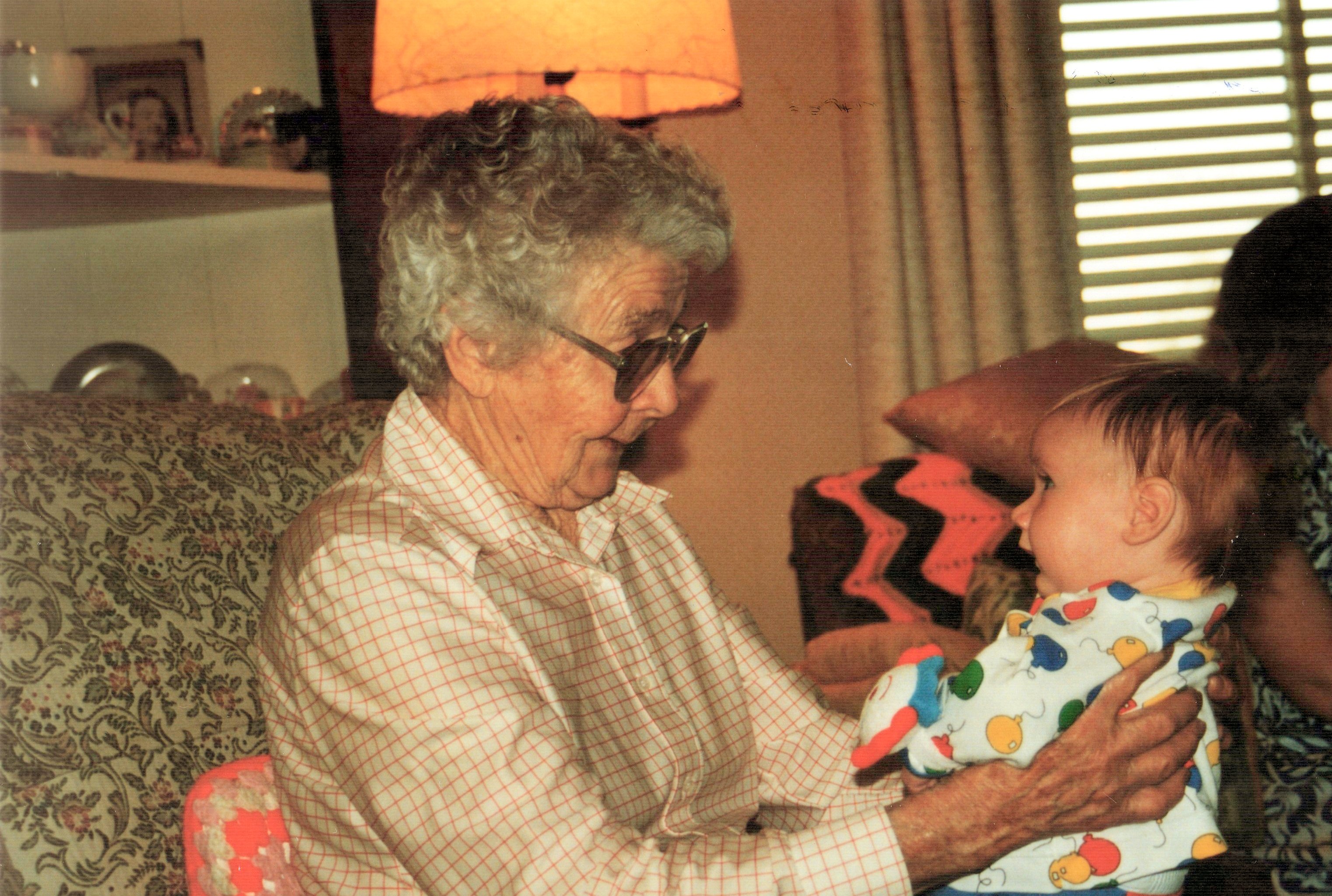Adding years to your life, or life to your years?
My great aunt took her first motorcycle ride at 100.

Figure 1: “Aunt Bess Takes Her First Motorcycle Ride at 100” by George Jones is licensed under cc by 2.0
Some thoughts on living in a small town, neuroscience and life.
What are you doing on your 100th birthday?
My great aunt Bess was one of 11 children, who lived her whole life in the small community around Frankfort, Ohio. She had scores of cousins and nephews and nieces. In her younger years, she worked as a cook in the local high school cafeteria and so knew an entire generation of kids in the community (and their kids) as they grew up. The last 50 years or so of her life, she lived in her own house on the edge of town. She lived on her own until the year she died (at 102). When we went to visit the routine was “Well, I don’t know what I’ll feed you all”, and an hour later a full thanksgiving dinner-style meal was on the table no matter what time of year from corn she had canned, etc.
We had a big birthday party for her at a local church when she turned 100. There where 100 or more people there. And that was the day she strapped on the leather and took her first motorcycle ride with a nephew.
She added both years to her life AND life to her years.
I recently listened to a book called “Successful Aging” by professional musician-turned-neuroscientist Daniel Levitin. One of the key ideas he points out is that people thrive on interaction with other people, from the earliest stages of childhood development to centegenarians like my aunt. For the book he interviewed a number of successful older people from former Mexican president Vicente Fox, to the Dali Lama, to former US Secretary of State George Shultz and professional jazz musician Sonny Rollins, all of whom were active and engaged well into their 80s or 90s.
And it’s not just old people. Levitin goes into the literature of childhood development. Kids need social interaction to develop properly. Kids thrive, literally, on social interaction. Social interaction is important to the early development of the brain, language learning and learning the self control needed to function in society. Without social interaction, some of these developments are physically retarded or absent, often permanently and irreversibly.
As Stacey Lance recently pointed out with some of what’s been going on for the past few years, “I’m a Public School Teacher. The Kids Aren’t Alright.” https://bariweiss.substack.com/p/im-a-public-school-teacher-the-kids. Kids need social interaction. My own reflections on the article are here http://curious.galthub.com/blog/2022-01-24/
I’m told similar things about the correlation between aging and thriving by a friend who is a financial councilor (he works with lots of older people) and our former pastor, in his 70s, who himself is working a third or fourth career at a construction company and maintaining the very active walking regime he and his wife have maintained for years.
In the past two years:
- I’ve seen a big family wedding celebration scaled down and held almost secretly for fear of police showing up.
- We canceled our annual new-years gathering of friends and family.
- I skipped visiting a relative who’s husband had just died as I was driving right past her house 100s of miles from home.
- Churches stopped meeting.
- The Catholic church stopped serving Communion in person, for the first time in 2000 years. Diocletian didn’t even get that far with his persecution (I’m not Catholic).
- Photography clubs stopped meeting.
- Kids stopped going to school (well, not home-schoolers…).
- People stopped going to restaurants and socializing.
- Appalachian Trail maintenance training and work trips have been canceled.
- Events people have planned their lives around like spending 6 months hiking, meeting 100s of people from, literally, all “walks” of life have been canceled.
- I (and millions others) have canceled plans to travel, meet people and enjoy interaction with our fellow human beings.
Are we adding years to our life, or life to our years?

Figure 2: “Aunt Bess holding a young Bryan” by George Jones is licensed under cc by 2.0
#3 of #100DaysToOffload take 2, https://100daystooffload.com/.